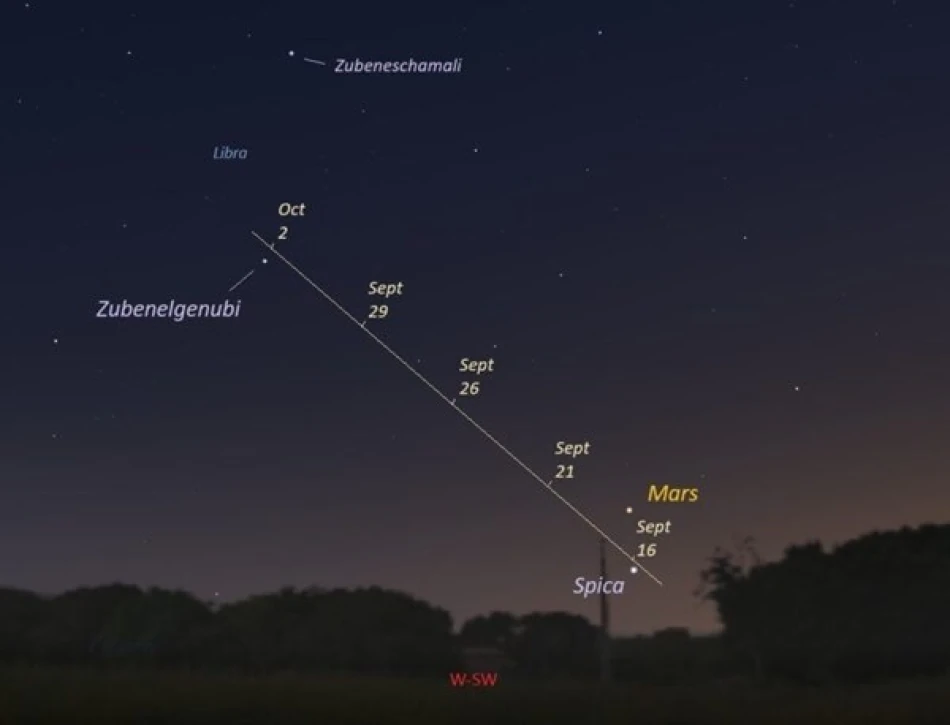
The Arab Seal Observatory Witnesses the Emergence of Comet SWAN25B
New Comet SWAN25B Could Deliver Spectacular Meteor Show in October
A newly discovered comet designated SWAN25B is approaching Earth and may trigger an unprecedented meteor shower on October 5, offering stargazers a rare double celestial spectacle. The comet, spotted through NASA's SOHO satellite imaging system, represents the kind of astronomical event that occurs perhaps once in a generation, with its 22,000-year orbital period meaning the last humans to witness it lived during the Ice Age.
First Arab Observatory Captures Historic Images
The UAE's Al Khatam Astronomical Observatory achieved a significant milestone by becoming the first Arab facility to photograph and document the comet within hours of its official discovery announcement. This rapid response demonstrates the growing sophistication of Middle Eastern astronomical infrastructure, positioning the region as an increasingly important player in global space observation.
The observatory's success came despite challenging conditions, with the comet appearing near the western horizon amid twilight interference at approximately seventh magnitude brightness—barely visible to the naked eye but clearly detectable through small telescopes.
Orbital Mechanics Point to Rare Meteor Event
According to Mohammed Shawkat Odeh, director of the International Astronomy Center, SWAN25B reached its closest approach to the Sun on September 12 at a distance of 75 million kilometers. More significantly for Earth-based observers, the comet will make its nearest pass to our planet on October 19, closing to just 39 million kilometers.
The potentially spectacular meteor shower on October 5 results from Earth's trajectory intersecting the comet's orbital debris field. As our planet plows through the dust and particles shed by SWAN25B during its solar approach, these materials will burn up in our atmosphere, creating streaks of light across the night sky.
A 22,000-Year Journey
Preliminary calculations suggest SWAN25B follows an extremely elongated orbit requiring approximately 22,000 years to complete one revolution around the Sun. This timeframe places the comet's last appearance during the Late Glacial Maximum, when woolly mammoths roamed the Earth and human civilization consisted of scattered hunter-gatherer societies.
Viewing Opportunities for Amateur Astronomers
Current observations show the comet displaying eighth magnitude brightness with a tail extending between two and five degrees across the sky. Enthusiasts can locate SWAN25B in the western sky approximately 45 minutes after sunset, positioned near the distinctive red glow of Mars.
The comet's gradually increasing altitude above the horizon improves viewing conditions nightly, making it accessible to anyone with basic astronomical equipment. Small telescopes or quality binoculars should provide clear views of both the comet's nucleus and its developing tail structure.
Scientific and Cultural Significance
Beyond its visual appeal, SWAN25B offers researchers valuable insights into the composition of the outer solar system from over 20 millennia ago. Comets serve as frozen time capsules, preserving materials from the solar system's formation period largely unchanged by solar radiation or planetary gravitational influences.
The successful detection and rapid follow-up observations also highlight the effectiveness of international astronomical cooperation, with space-based discovery systems enabling ground-based facilities worldwide to coordinate detailed studies within hours of initial detection.
For the broader public, events like SWAN25B's appearance provide tangible connections to cosmic processes operating on timescales that dwarf human history, offering perspective on our planet's place within the larger astronomical context.
Most Viewed News

 Layla Al Mansoori
Layla Al Mansoori






